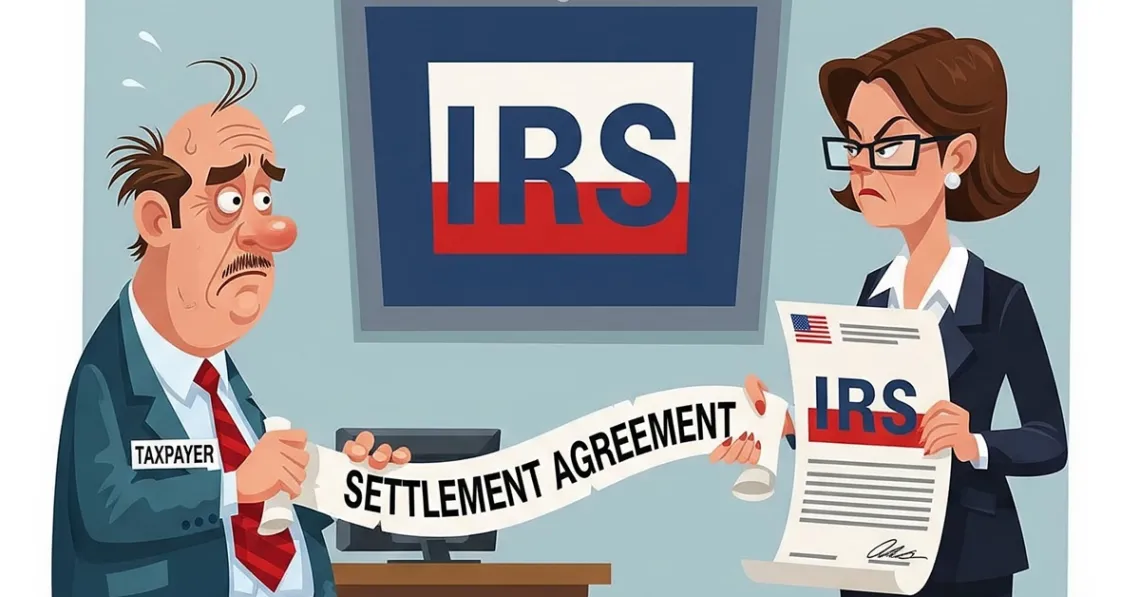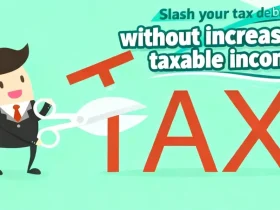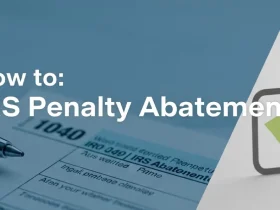
When taxpayers fall behind on their IRS obligations, the balance often feels impossible to manage. Penalties and interest make the debt grow, and enforced collection can create more pressure.
When you owe the IRS more than you can afford to pay, the idea of a “tax settlement” can sound like a lifeline. But what does that phrase really mean?
Is there a single program called “tax settlement,” or is it a broader concept?
In plain English, a tax settlement is an agreement with the IRS (or a state tax agency) that lets you resolve your debt for less than the total amount owed or on terms you can realistically manage.
It’s not one specific program — it’s an umbrella term for several different IRS relief options.
Defining a Tax Settlement
Unlike “tax lien” or “tax levy,” there’s no official IRS form called “Tax Settlement.”
Instead, a tax settlement is a resolution that allows you to settle IRS debt for less than the full balance owed. The most common settlement program is the IRS Offer in Compromise, where you propose to pay a reduced amount based on your financial situation.
Settlement can include:
- Reducing the balance owed.
- Waiving or abating penalties.
- Spreading payments out over time.
- Temporarily delaying collection if you’re unable to pay.
However, settlement does not always mean complete forgiveness. Instead, it means finding a legally approved compromise that resolves the debt and clears your record with the IRS.
The Main IRS Settlement Options
Here are the most common ways taxpayers “settle” with the IRS:
1. Offer in Compromise (OIC)
The most well-known type of settlement. If you qualify, the IRS may accept a lump sum or short-term payment plan for less than you owe.
Approval depends on your income, expenses, and asset equity.
2. Installment Agreements
Not all settlements reduce the total bill. An installment agreement lets you repay your balance in monthly payments you can afford.
It prevents more aggressive IRS collection actions and keeps you compliant.
3. Penalty Abatement
Sometimes penalties (for late filing, late payment, etc.) make up a large share of what you owe.
The IRS may agree to remove or reduce penalties if you show “reasonable cause” or qualify for first-time abatement.
4. Currently Not Collectible (CNC)
If your finances are so limited that you can’t pay anything, the IRS may label your account Currently Not Collectible. They pause active collection until your situation improves.
While interest still accrues, CNC status buys time and often leads to longer-term solutions.
Each of these options helps taxpayers settle IRS debt for less, even if not labeled as an official “settlement.”
How the Settlement Process Works
While each option has unique requirements, most follow a similar process:
- Filing Requirements — You must be up to date on filing all required tax returns.
- Financial Disclosure — The IRS requires detailed income, expense, and asset information (via Form 433-A or 433-B).
- Application or Request — Depending on the option, you file Form 656 (OIC), request an installment agreement, or write a penalty abatement letter.
- IRS Review — An examiner reviews your paperwork, may request more documents, and decides whether to accept.
- Final Agreement — If approved, you’ll receive written confirmation with the terms.
This review process can take several months. The timeline depends on the complexity of your case and how quickly you respond to requests.
Examples of Tax Settlement in Action
Misconceptions About Tax Settlement
- Case 1: The Lump Sum OIC
A self-employed contractor owes $50,000 but can only prove ability to pay $12,000. After documenting income and asset values, the IRS agrees to settle for $12,000 under an OIC. - Case 2: Penalty Abatement
A business files late due to natural disaster disruptions. The IRS removes $8,000 in penalties, leaving only the original tax and interest to pay. - Case 3: Affordable Payments
A family with steady income sets up a $250/month installment agreement on a $15,000 debt, preventing levies and wage garnishment.
These examples highlight how tax settlement does not erase obligations without reason — it is a structured compromise.
Because tax settlement is heavily advertised, some common myths persist:
- Myth 1: Everyone qualifies. In reality, most taxpayers must prove financial hardship or limited ability to pay.
- Myth 2: Settlement eliminates all tax issues. While it resolves the balance, you must stay compliant afterward.
- Myth 3: Settlement happens quickly. The process can take months, sometimes over a year, depending on complexity.
Understanding these misconceptions helps avoid false expectations.
Alternatives When Settlement Is Not Possible
If you do not qualify for an OIC or other settlement program, alternatives include:
- Full Installment Agreement. Repay the debt over time without reduction.
- Short-term payment plans. Pay balances under $100,000 within 180 days.
- Bankruptcy (in limited cases). Some tax debts may be dischargeable in bankruptcy, though strict rules apply.
While these options do not reduce the principal, they provide structure and protection against aggressive collection.
Connecting the Series
This article builds on our last blog, which clarified whether canceled Offer in Compromise debt is taxable income. That discussion dispelled a common myth about settlement consequences.
Next, we will look at what happens if an IRS payment plan is denied. That post explains your options if the IRS refuses a straightforward agreement.
Final Thoughts on Tax Settlement
A “tax settlement” isn’t one-size-fits-all. It’s a term for a set of IRS programs that can reduce or restructure what you owe.
Whether it’s an Offer in Compromise, an installment plan, or penalty relief, the goal is the same: to resolve your debt in a way the IRS accepts and you can sustain.




